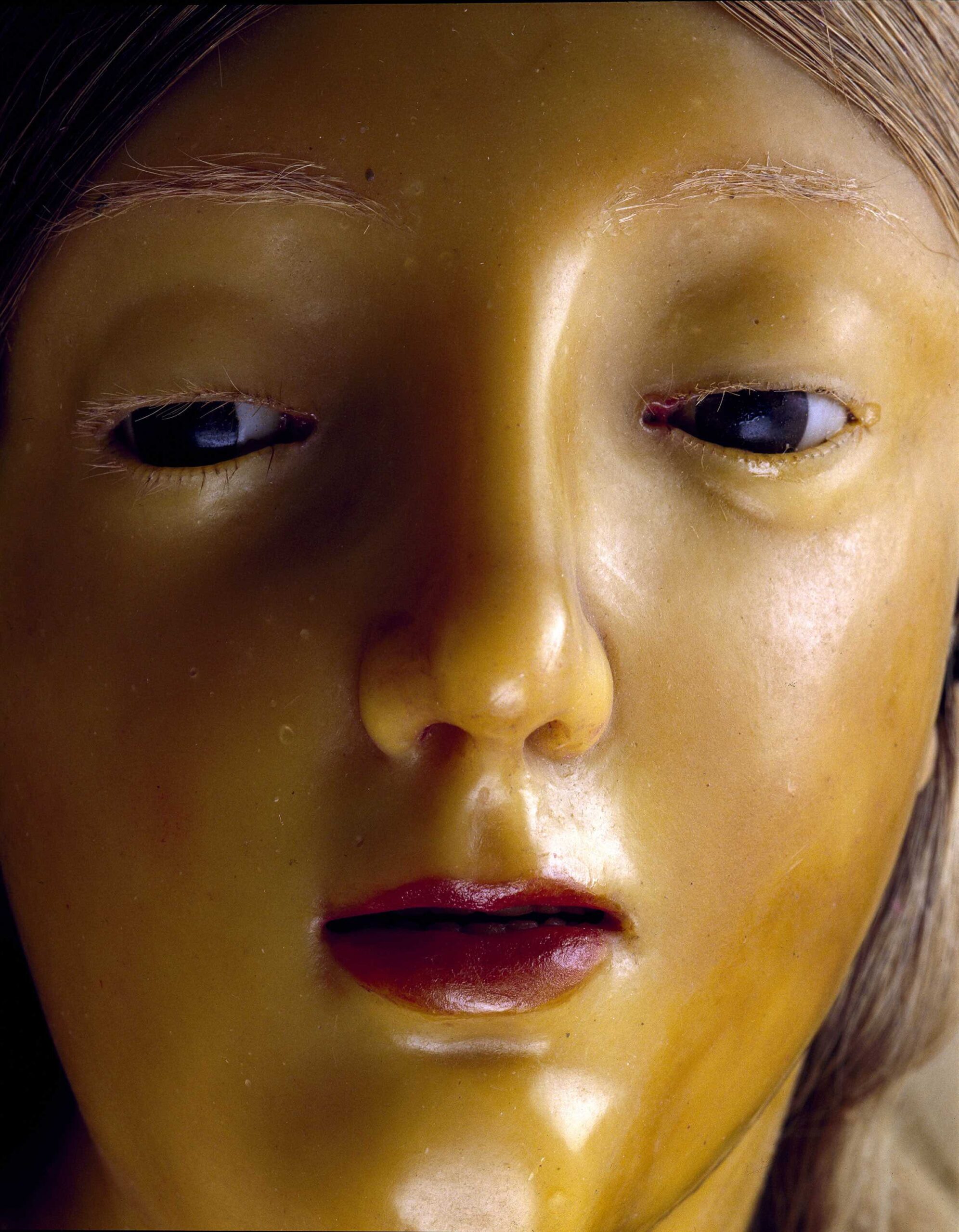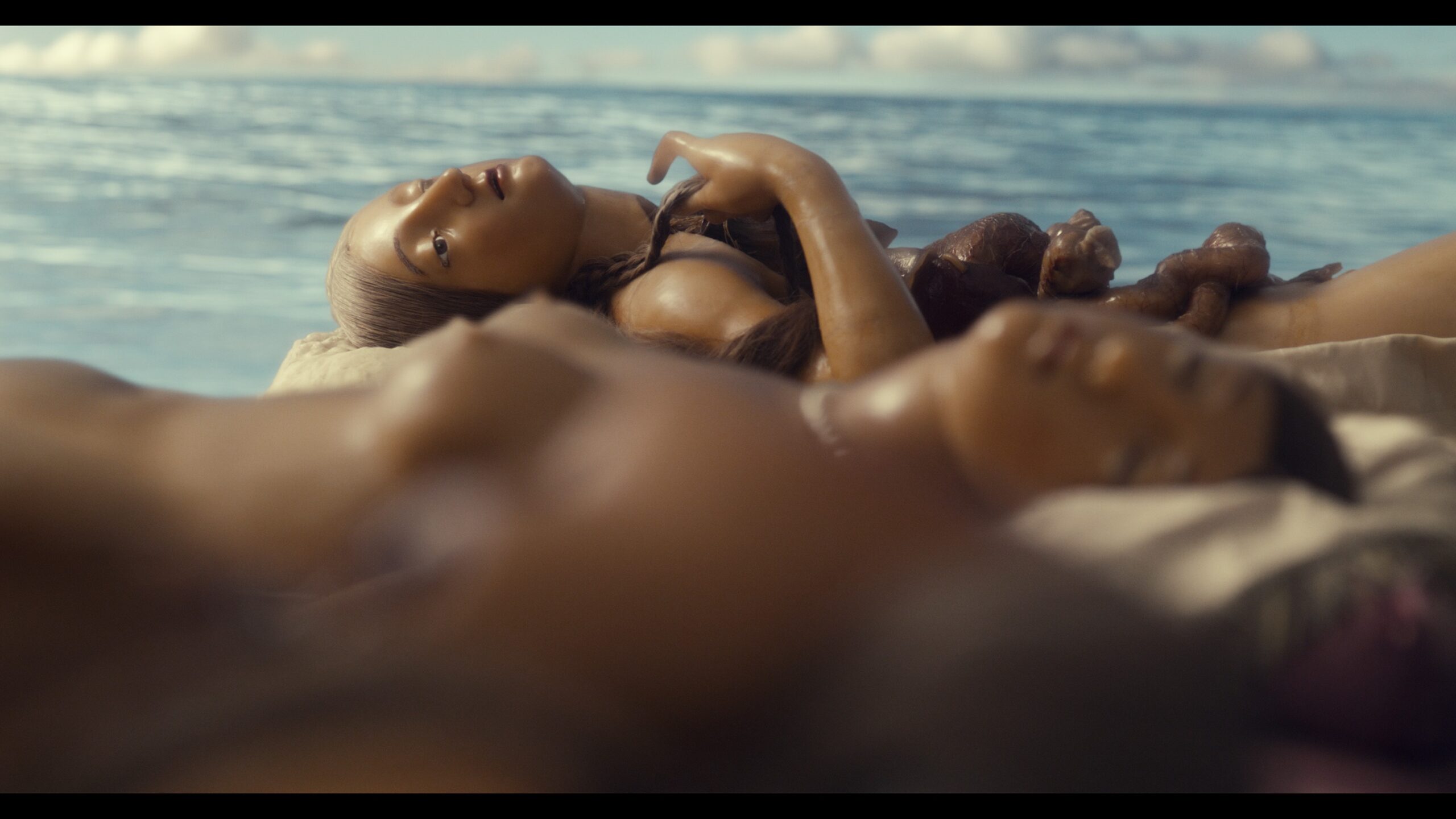Fondazione Prada’s research path, through which it wants to increase knowledge of important collections from guest museums, continues with the most recent exhibition entitled Cere anatomiche (Anatomical Waxes), a project in collaboration with La Specola, part of the Museum of Natural History and the University of Florence’s Sistema Museale di Ateneo, and filmmaker David Cronenberg. The new exhibition, open from March 24 to July 17 in Milan, offers different interpretations and visions of cultural heritage, contributing to the development of an ongoing dialogue between historical collections and a contemporary institution. The exhibition is divided into two parts, the first dedicated to thirteen 18th-century ceroplasts from the Florentine museum’s collection, focusing on the scientific aspect of the project, which shows the different female anatomical models and the way women’s bodies were represented for educational purposes. The second part features a never-before-seen short film made by Cronenberg: Four Unloved Women, Adrift on a Purposeless Sea, Experience the Ecstasy of Dissection introduces the exhibited works into an alternative dimension, making use of the most advanced digital editing techniques. Through the video, the director explores the fascination with the human body and the ultimate possibilities of mutation and contamination.

Recumbent female statue showing the distribution of the lymphatic vessels
Late 18th century, Polychrome wax model
Anatomical wax collection, Room XXIX, case no. 745
“La Specola” Museum, Museum of Natural History of the University of Florence
SMA, Sistema Museale dell’Università degli Studi di Firenze, ph. Saulo Bambi
“The museum and the artist propose to the public complementary visions. The result is at the same time an art exhibition, an anatomy lesson and a video about desire.”
Cere anatomiche investigates and explores the scientific narrative through an artistic and contemporary eye, where two distinct set-ups take shape, both created by the creative agency Random Studio: on the first floor the waxes of La Specola are displayed with order and rigor recalling the classic museum approach, while on the ground floor the same waxes allow the subject to be explored in depth by inserting themselves into the imagery created by the director. The works were created purely for educational purposes, to permit those who did not have the opportunity to access anatomy classes to discover the composition of the human body. The sculptors did not want to make figures that were suffering, sad or showed a sense of agony through facial expression, so they created figures that seem to be overwhelmed by ecstasy. It is precisely this aspect that aroused great interest in David Cronenberg, “What if it was the dissection itself that induced that tension, that almost religious rapture?” The result of the exhibition is an art exhibition and at the same time an anatomy lesson, a video about desire and an operation of didactic experimentation. Miuccia Prada says she feels the need to tell the value of a historical collection while promoting curiosity about scientific studies. Fondazione Prada has already explored this world in the past through the Human Brains project, dedicated to the foundations and new developments in neuroscience, and Useless Bodies?, Elmgreen & Dragest’s exhibition that investigated the role of the body in today’s society.
The exhibition is the second project in which Fondazione Prada uses its spaces to present works from another institution to make contemporary the meaning of the museum and expand its role in society, allowing for increased awareness of the past and establishing a growing interdisciplinary dialogue. It features four lying down female figures, three from the lymphatic system section and one from the obstetrics section; nine detailed waxes showing gestation, and seventy-two anatomical illustrations. The work Venus, now on display at Fondazione Prada, is one of the most significant of the collection at the La Specola Museum in Florence: it is a rare model, which, as its name suggests, is known for its beauty and for its form composed of seven decomposable layers under which a fetus is hidden. The figures arouse strong emotions in the audience that oscillate between admiration and outright revulsion, triggering mixed feelings. David Cronenberg’s short film presents an alternative look at these four wax figures, showing the more visionary and contemporary side of the collection and constituting an alternative point of view to the institutional one: it further emphasizes the focus on the female body and the way it has been represented, investigates aspects related to the image of women, sexuality and pleasure, generating new reflections, intellectual suggestions and strong emotional reactions.

Recumbent female statue showing the distribution of the lymphatic vessels
Late 18th century, Polychrome wax model
Anatomical wax collection, Room XXIX, case no. 745
“La Specola” Museum, Museum of Natural History of the University of Florence
SMA, Sistema Museale dell’Università degli Studi di Firenze, ph. Saulo Bambi
Cere anatomiche represents another opportunity for Fondazione Prada to investigate scientific knowledge by placing it within an even broader cultural framework.
On the occasion of the project, Fondazione Prada is publishing a volume together with different contributors, including Miuccia Prada and Patrizio Bertelli, who explore the extraordinary legacy of La Specola Museum’s collection. The exhibition underscores the importance of scientific research and its connection to artistic and creative practice, while also playing a fundamental role for the museum in Florence, it expands the knowledge of the historic institution in the city of Milan and in an international context that distinguishes the Foundation. David Cronenberg takes part in the project by making the scientific topic further stimulating, transporting the audience inside a new dimension that promotes attention to female bodies by developing a contemporary vision and a strong connection with creative practice.
For further information fondazioneprada.org.













